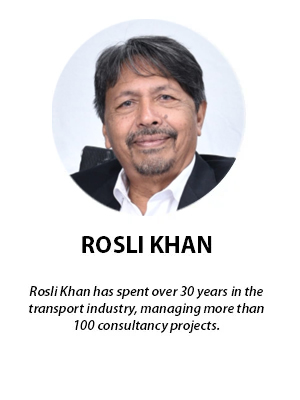
Every day, more than 15 people lose their lives on Malaysian roads. That is a staggering statistic and is why Malaysia now ranks third in the list of countries with the highest number of road accidents per year.
That is not a statistic we can be proud of, so let’s focus on one of the biggest unresolved problems affecting this country – road accidents.
Over the years, road accidents have brought unnecessary grief to so many Malaysians who were either victims or lost a loved one in road crashes.
According to the latest police data, Malaysia saw 598,635 road accidents last year, from which 6,433 people died.
This figure is much higher than the number of deaths from Covid-19 in the country last year. We spent a lot of money and resources to stop this flu bug. In contrast, given deaths from road accidents are preventable, not enough is being done to reduce our road accident rate.
Basic Components
The truth is that we have not done too well in dealing with the four components that can help reduce road accidents, known as the 4Es: Engineering, Education, Enforcement and Environment.
In Malaysia, the roles and responsibilities for each of the four components, are split across many different government departments and agencies:
- The works ministry is responsible for road and highway planning, and their management and maintenance, i.e. the engineering aspect.
- The transport ministry is tasked with registration of motor vehicles, and for education, licensing and training of road users.
- PDRM is given authority over traffic offences, accident reporting and enforcement.
- The housing and local government ministry takes charge of roads within the purview of the local authorities, public transport stations, parking, pavements and urban spaces.
- The education ministry is entrusted with early road safety education.
Thus, the transport ministry’s suggestion that a Cabinet committee be formed to look into road safety and congestion issues is most welcome to bring together the various parties involved.
Engineering
There are departments within the works ministry that undertake road and highway planning, but they are confined to infrastructure issues only.
Safety features for roads and highways could have been incorporated during the planning and design stage, but in the past, construction may have departed from safe design standards.
When accidents happen, the blame is often placed squarely on the shoulders of road users, not on road or highway design or their construction.
There are many “black spots” along roads and highways across the country that are responsible for a substantial number of accidents.
No emergency lane
For example, Federal Route 1 (the trunk road that services the West Coast of the peninsula), the Federal Highway, the Damansara-Puchong Expressway and many others were allowed to be constructed without emergency lanes or road shoulders.
In many other instances, the emergency lanes constructed were smaller than the width of standard vehicles. Many fatal accidents have occurred when vehicles have stopped in these narrow emergency lanes or on the side of roads without one.
Rear vehicle collisions as a result of stopping on emergency lanes are still a common occurrence on Malaysian roads and this shortcoming needs to be addressed technically and objectively by the authorities concerned.
Increase in traffic volume
Many of our roads were designed for a certain traffic volume, but have not been upgraded to accommodate the steep growth in vehicle usage over the years.
There needs to be monitoring of road capacity in light of the ever-increasing traffic volume. This problem may have a correlation to higher accident volumes.
Another issue linked to overcapacity roads is the lack of properly designed and safe interchanges to regulate traffic conflicts. Many accidents occur at road level (or at grade) junctions which should have been upgraded to split level interchanges to avoid traffic conflicts.
Traffic monitoring
It goes without saying that the increasing traffic volume experienced over several decades has made our roads and highways busier, raising the probability of accidents occurring.
This is where traffic planning is most needed.
There is an immediate need for traffic safety experts or planners to be brought in to assess and identify unsafe conditions which have made our roads accident zones.
Traffic planners have a big role to play in this aspect of road and highway engineering, in order to reduce the high rate of road accidents in the country.
TO BE CONTINUED
- FMT
The views expressed are those of the writer and do not necessarily reflect those of MMKtT.
No comments:
Post a Comment
Note: Only a member of this blog may post a comment.